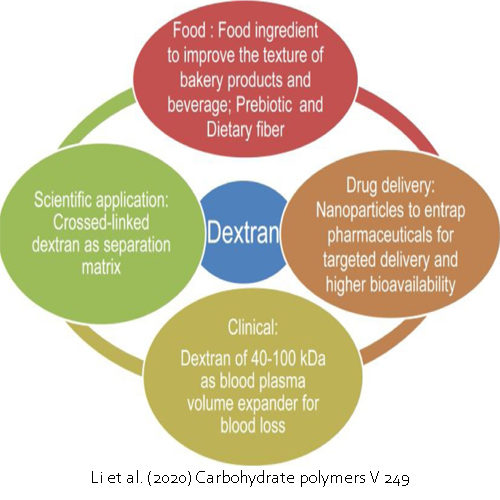Strongly recommended open-access paper Li, X. et al., 2020. Structures, physico-chemical properties, production and (potential) applications of sucrose-derived α-d-glucans synthesized by glucansucrases. Carbohydrate Polymers, Volume 249, p. 116818. DOI 10.1016/j.carbpol.2020.116818. Enjoy reading this review.
Abstract
Glycoside hydrolase family 70 (GH70) glucansucrases produce α-D-glucan polysaccharides (e.g. dextran), which have different linkage composition, branching degree and size distribution, and hold potential applications in
food, cosmetic, and medicine industry. In addition, GH70 branching sucrases add single α-(1→2) or α-(1→3) branches onto dextran, resulting in highly branched polysaccharides with “comb-like” structure. The physicochemical properties of these α-D-glucans are highly influenced by their linkage compositions, branching degrees and sizes. Among these α-D-glucans, dextran is commercially applied as plasma expander and separation matrix based on extensive studies of its structure and physico-chemical properties. However, such detailed information is lacking for the other type of α-D-glucans. Aiming to stimulate the application of α-D-glucans produced by glucansucrases, we present an overview of the structures, production, physico-chemical properties and (potential) applications of these sucrose-derived α-D-glucan polysaccharides. We also discuss bottlenecks and future perspectives for the application of these α-D-glucan polysaccharides.
